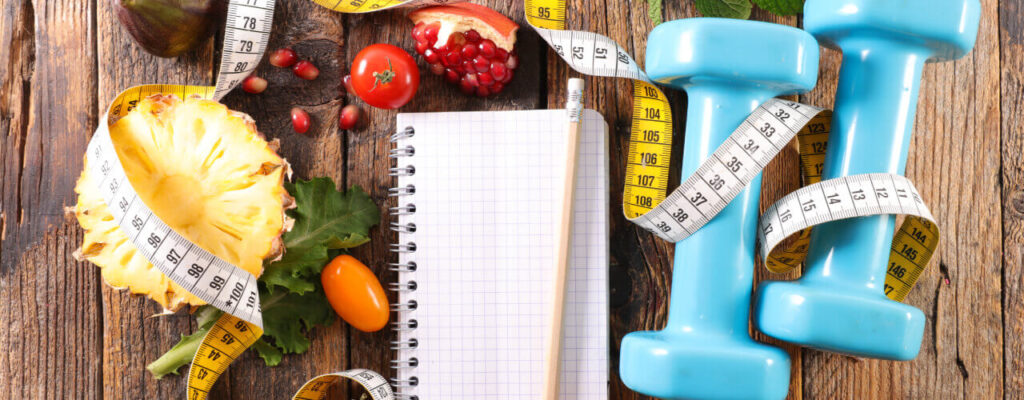Change Your Diet, Change Your Life: The Secret To Feeling Your Best Is In Your Kitchen!

The food you eat has a significant impact on your energy level and waistline. What’s more difficult to remember is that your dietary choices have an impact on joint pain as well! At our physical therapy facility, we believe in taking a holistic approach to treating acute and chronic pain.
You’re not merely a diagnosis or a set of symptoms to your physical therapist. You could benefit from a variety of treatments and lifestyle adjustments, including dietary changes, to help you get long-term relief. Make an appointment with our clinic today!
How can my diet cause pain?
Have you ever wondered how your food choices could be influencing your acute or chronic pain condition? Here are three ways diet plays a role in your pain relief (or lack thereof):
- Eating the right type of food gives your body the raw material it needs for health. Joints, tendons, muscles, and nerves are continually being rebuilt in your body. Vitamins, minerals, fatty acids, and antioxidants are used by the body to provide the “building material” needed to create these issues and ensure that the re-building process occurs smoothly. If you don’t give your body these essential elements, your body’s ability to heal itself may be hampered.
- Eating the right amount of foods promotes optimal function. Excessive body fat causes inflammation, according to studies. Eating too many calories might contribute to weight gain. Excess weight puts more strain and stress on your joints, and it can increase your risk of health issues including fibromyalgia, arthritis, degenerative disc disease, and diabetes, which are all associated with chronic pain.
- If you don’t eat enough food, on the other hand, your muscles and tissues may lack the energy they need to develop, heal, and rejuvenate. Undereating can cause weariness and make it difficult to exercise properly or participate in activities like physical therapy.
- Certain foods promote inflammation in the body. Inflammation is a natural element of your immune system’s response, and it helps protect you from things like illness and damage. Inflammation is a necessary aspect of the healing process in acute injuries. Tissue and cellular damage can result if inflammation lasts too long, as in the case of arthritis. Inflammation plays a role in pain perception as well. It turns out that certain foods might aggravate inflammation and, as a result, exacerbate discomfort.
- Pro-inflammatory foods can even harm the friendly bacteria in your gut, known as the microbiome (often called the “forgotten organ”). This can impair nutrient absorption and further disrupt your immune system since your gut and immunity are closely linked.
What foods should I choose?
Our physical therapy staff encourages our patients to consult with dietitians or other professionals for more customized and advanced nutritional support. But we’re also happy to provide some basic guidelines that can optimize the well-earned results you get from working with a physical therapist.
The first tip: eat real food! Think minimally processed, nutrient-dense, diverse, and delicious:
- Quality protein like eggs, lean meat, fish, and poultry
- Legumes, nuts, and seeds
- Fermented foods like tempeh, sauerkraut and kimchi (these are loaded in gut-healthy probiotics)
- Fruits and vegetables (fresh, frozen, or even canned are all great—just watch for additives)
The idea is to eat foods that you enjoy so that eating a better diet becomes easy and sustainable. Our physical therapy team advises patients to avoid following the current fads and trends. Simply begin with the fundamentals—plants, protein, and healthy fats—and work your way up from there.
Another suggestion? Learn how to prepare meals! Cooking at home can help you save money while also allowing you to have more control over what goes into your food. If pain makes cooking difficult, a physical therapist can teach you crucial skills such as activity pacing and house adjustments to help you succeed in the kitchen.
In addition to food, don’t forget water! You need great hydration every day to help your tissues stay healthy and flush out harmful toxins and waste products from your system. Staying well-hydrated boosts circulation, enhances joint lubrication, eases muscle cramps, supports spinal disc health, alleviates headaches, and more.
Some people find that taking supplements like fish oil or chondroitin and glucosamine relieves their pain and improves their overall health. There is inconclusive evidence on various supplements, and not all supplements are made equal. So, before you start taking any new supplements, talk to your primary care physician!
Finally, what should you stay away from? Certain meals and food ingredients, according to the Arthritis Foundation, can cause inflammation in the body, which can increase or prolong chronic pain. Among these foods are:
- Refined carbohydrates (think crackers, candy, pasta, bread)
- Trans fat
- Vegetable oils
- Refined sugar
- Alcohol
- MSG (a preservative often found in fast foods)
- Gluten (a protein found in grains like wheat, barley, and rye)
- Casein and lactose (a protein and sugar, respectively, found in dairy products)
- Saturated fats
- Non-caloric artificial sweeteners
Certain “treats,” such as sweets or alcoholic beverages, can be enjoyed in moderation. Simply keep track of how much and how often you consume them. Before a “treat,” have a nutritious protein-rich snack and drink plenty of water to help you control your quantities.
Get your life back on track with a healthy, well-rounded diet with physical therapy!
Looking for more holistic ways to improve your health and relieve pain? To arrange an appointment with an expert physical therapist who can help your body and mind thrive using a customized variety of drug-free, non-invasive, and whole-person treatments, call our physical therapy office now.
